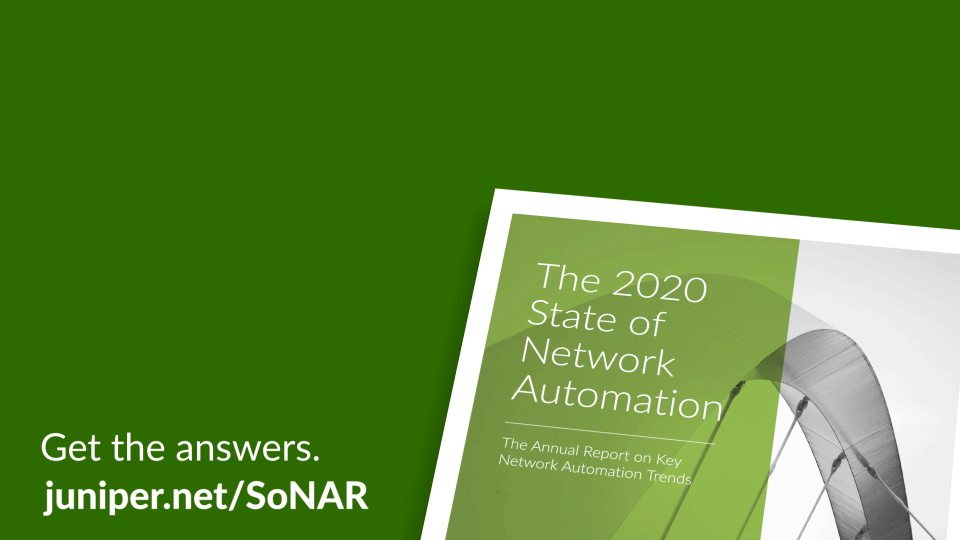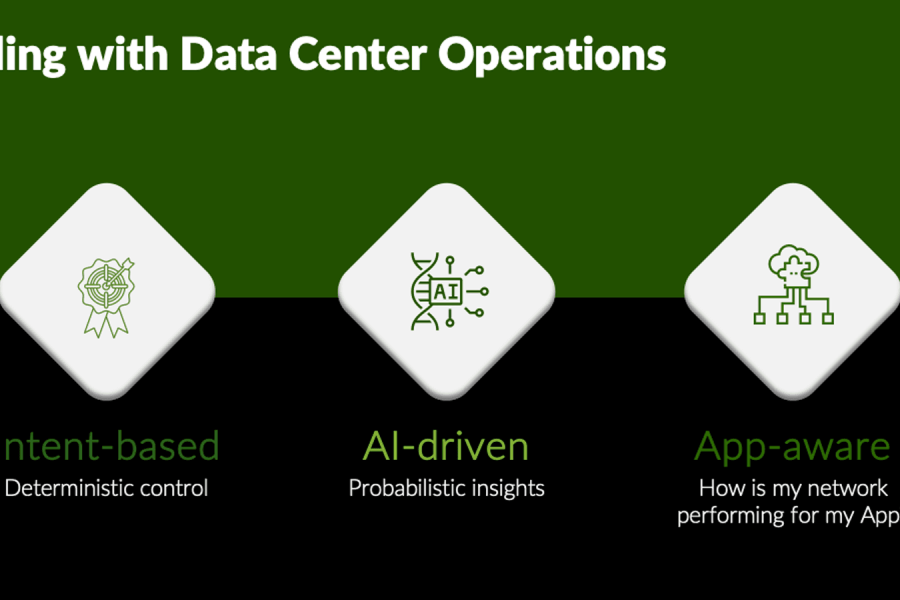For the second year, the State of Network Automation Report (SoNAR) provides user-reported, global insights about the industry’s overall journey to automation, understanding how and when companies are embracing this path and the results of their decisions.
The top finding? The network automation revolution is well underway.
About 75% of Communications Service Providers (CSPs), 71% of Enterprises and 78% of Cloud Providers report they use some type of network automation, showing that network automation is a lasting trend. About a quarter of each segment is at the start of that trend — beginning to automate beyond the Command Line Interface (CLI) with basic scripting. Meanwhile, a full 24% of Cloud Providers say they use automation in production in all network places. For those who compete in the Cloud Provider space or aspire to run their operations as efficiently, the 2020 SoNAR results offer encouragement to get network automation projects up and running.
The report helps to benchmark where you are and includes helpful tips for your next moves based on the collective wisdom of our survey participants.
Here are the key findings from this year’s report:
1. Network Automation has Moved from Best Practice to Common Practice
Network automation is quickly changing how engineers deploy, change and manage their networks. While 47% of organizations started to automate less than three years ago, 50% already automate in production networks.
In leading network automation adoption, Cloud Providers show that experience helps conquer a top challenge—fear of making a mistake in production—with full automators less afraid than less mature automators. This is good news for those who are early in their adoption of automation in their networks.
2. Reducing Repetitive Work is the Top Goal
In 2019, the most common technology driver was improved security. However, this year, nearly 20% of respondents across all segments said that the top driver to automate is to reduce hard and repetitive work.
From there, segments rank technology drivers differently. Both types of service providers say that scaling operational efficiency is the second most important technology driver. Improving metrics—like time to change and incident response—and mean-time-to-repair (MTTR) rank third and fourth. On the other hand, Enterprises automate to improve incident response and their MTTR, including to improve security outcomes.
Whoever they are, our many respondents are experiencing benefits from automation.
3. Network Automation Increases Reliability
While last year our respondents drew inspiration to improve from DevOps, this year, Network Reliability Engineering (NRE/SRE) takes the top spot. The more automated the network, the more likely changes become less prone to human error. Nearly 60% of mature automators say that network changes rarely result in service issues, including 14% who say that network changes never lead to service degradations.
Further, full automators—as opposed to both non-automators and less mature ones—consistently report that they have defined service level goals along with a way to measure and report. As a result, full automators have better visibility into network problems.
4. Job Satisfaction Rises with Automation
Among the top group of network automators, 78% say they’re satisfied with the job compared to 60% of non-automating respondents. Further, they agree or strongly agree that they have the tools and resources to do the job well; their job makes good use of their skills and abilities and they reach a high level of productivity.
The survey shows that more mature network automators see results in higher job satisfaction and a more enriching workplace. Those who embrace automation have happier employees who exceed their performance goals.
5. Businesses that Implement Network Automation Outperform those Who Don’t
The more network automation is used, the higher the business benefit. About 67% of leading network innovators exceed organizational performance goals compared to 57% of non-automating respondents.
When Cloud Providers were asked about whether they were above, at or below for four key business goals in the last year, full automators met or exceeded expectations with 90% reporting that they are above goal for customers and 91% above goal for organizational performance. On the other hand, non-automating respondents are more likely to be at or below goal, with 20% reporting they are below goal for customers and 11% reporting they are below goal for organizational performance. Those who use network automation crushed their business goals in comparison.
How Can Juniper Networks Help with Automation
Juniper’s customers are modernizing their networks to meet evolving needs for scale and agility with solutions that simplify operations. Robust APIs allow network operators to create their own reusable automation solution and allow the use of many different automation frameworks. With our single switching line that features the Junos OS everywhere, automation begins with fabrics and extends to workflows.
Foundational to how Juniper helps its customers is recognizing that a major challenge in automating involves how to get there. While organizations must address technical challenges, it is equally important to evolve the changes in processes, skill sets and culture. To help customers, Juniper has summarized the approach to automation as a network reliability engineering journey in five steps.
Additionally, Juniper provides educational materials to help customers get started with automation. NRE Labs is an open-source, browser-based educational project sponsored by Juniper that focuses on making network automation accessible for everyone. Through short, simple exercises in your browser, you can learn the tools, skills and processes that will put you on the path to becoming a Network Reliability Engineer. Visit nrelabs.io.
For more information about Juniper Automation solutions, please visit us at www.juniper.net/automation
About the Report
For SoNAR 2020, the survey was expanded to include Enterprise, Cloud and Communications Service Provider network operators around the world. The survey included organizations that have not yet started their network automation journey. After all, to truly understand the 2020 State of Network Automation, it’s important to hear from organizations that have yet to start their automation journey, those at the beginning, those who are testing, as well as those organizations that have embraced automation and those who are in full production.
The report has a chapter each for Communications Service Providers, Cloud Providers and Enterprises. These chapters explore:
- Where they automate
- Tools, vendors and processes for network automation before and during production
- Business outcomes
- Commentary by our network architect expert, Donal O Duibhir.
The last section presents the roadmap to achieving greater network automation:
- Individual and team skills that move you and your organization to the next level of network automation
- Departmental outcomes
- A wrap up from a network architect and NOG (Network Operator Group) organizer to help you along your path toward greater network automation.
You can read about additional insights on automation trends for your segment in our blogs for the Enterprise Summary and the Cloud and Service Provider Summary.
You can download the 2020 State of Network Automation Report (SoNAR) here.


